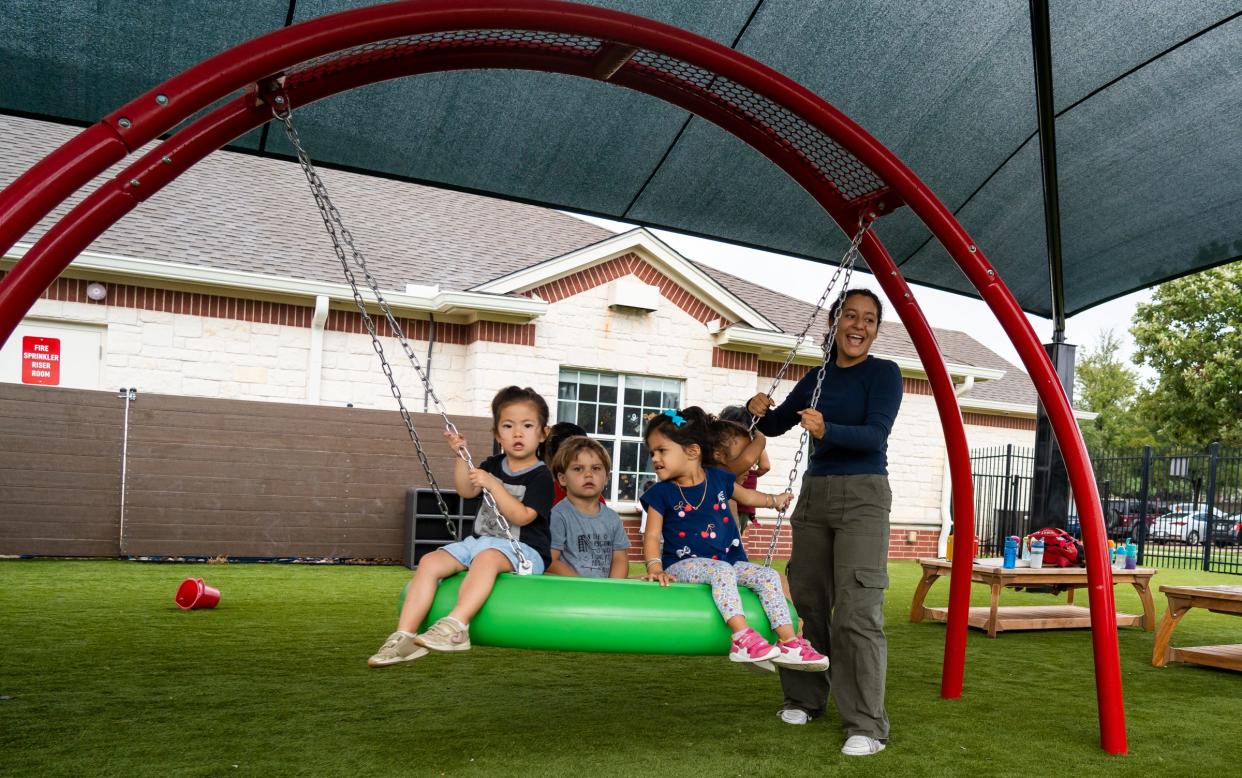Travis County voters may decide whether to approve a tax increase to pay for child care

Travis County voters in November may decide whether to raise the property tax rate by 2.5 cents per $100 valuation to help fund early childhood education and after-school and summer programs for children after county commissioners gave the measure an initial approval.
“When we invest in child care, the whole community benefits,” Travis County Judge Andy Brown said at a news conference after the vote Tuesday. “There are lower incarceration rates, lower health care costs and a better educated workforce.”
County leaders hope the funding proposal, which is estimated to generate $76.8 million, could expand access to quality child care as parents statewide struggle to find affordable care that allows them to stay in the workforce.
Commissioners on Tuesday unanimously voted to preliminarily approve the proposed tax rate increase. The Commissioners Court will need to take a second vote to call an election on the proposal to put the measure in voters' hands.
The proposed tax increase is expected to cost the average homeowner an additional $10.20 per month, according to early county estimates.
Travis County has particular issues with child care accessibility, Brown said. Many waitlists for placement in a child care program extend to up to 24 months, he said.
Access to child care also helps children prepare for their own futures, said Precinct 1 Commissioner Jeff Travillion.
“If our kids aren’t trained to work in those places, what is the benefit of bringing Fortune 500 companies?” he said.
Travis County has a high need for early childhood care, Austin school board President Arati Singh said.
There are about as many families on the school district’s waitlist for early childhood care as there are students actually being served by those services, she said.
“High-quality early child care has just about the highest return on investment of anything you can do in public education,” Singh said. “Every dollar invested in early child care has about $7, even up to $14, of benefit down the road. This is a fiscally responsible investment.”
Commissioners expect to use the bulk of the new revenue, about $35 million, to increase the number of open spots available at early childhood care facilities.
An additional $11.4 million would go toward expanding the availability of after-school and summer care, according to county data.
Commissioners also hope to expand child care access during nontraditional hours for parents who work overnight shifts or on the weekend, and to improve the quality of early childhood care.
Child care access and affordability have long carried significant barriers for parents, but the COVID-19 pandemic exacerbated these problems with facilities closing statewide and many programs struggling to retain staff.
Eastern parts of Travis County are considered child care deserts, according to an analysis by nonprofit Children at Risk.
Swaths of the county's eastern regions, particularly east of Texas 130, have 0 to 20 child care seats available per 100 children of working parents, according to the nonprofit.
Better access to child care will also help improve the region's workforce retention, Brown said.
"It allows parents who want to return to the workforce to do so earlier, which benefits families and the economy overall," Brown said.
This article originally appeared on Austin American-Statesman: Elections: Travis County may call tax increase to cover child care

